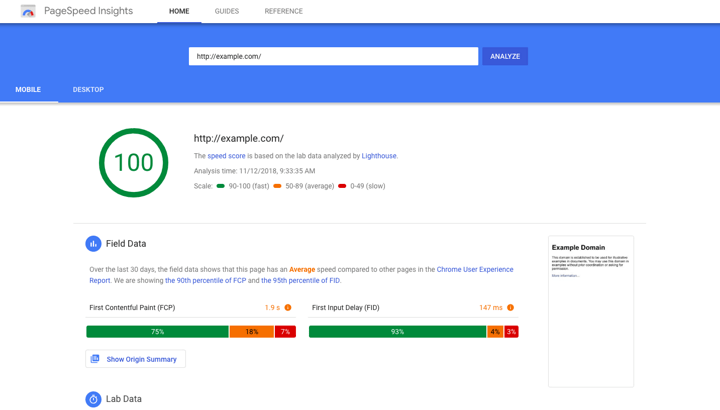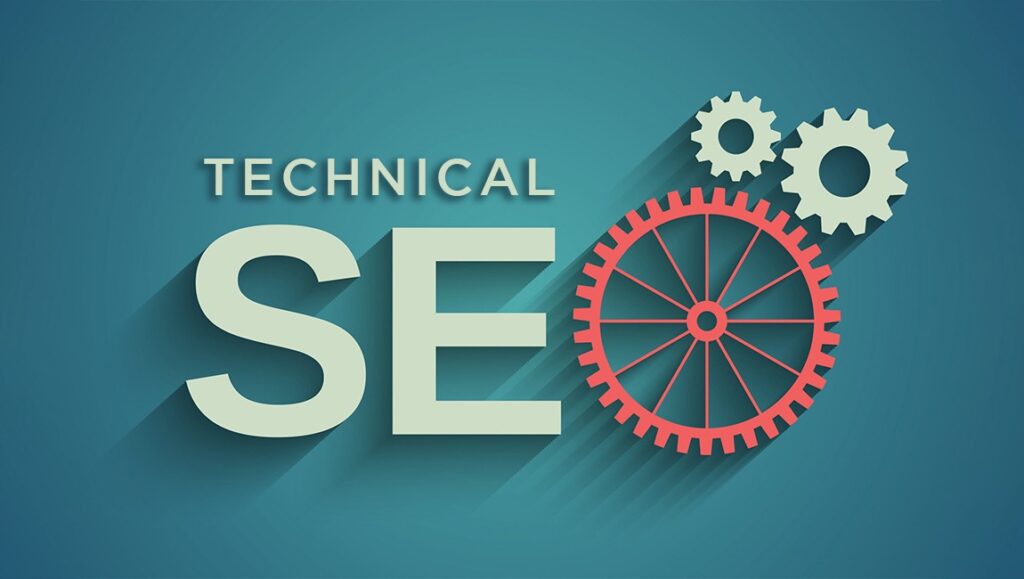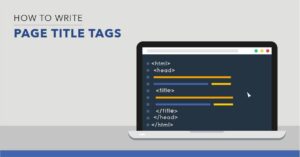In today’s digital age, having a solid Online presence is essential for businesses and organizations of all sizes. While creating valuable content and building a visually appealing website are crucial elements of an online strategy,
None of it matters if your website is not easily discoverable by search engines. This is where Technical SEO comes into play. Technical SEO refers to the process of optimizing a website’s infrastructure to help search engines like Google crawl and index it more effectively.
It is the foundation of any SEO strategy and involves improving the backend aspects of your website, including its structure, code, and overall performance. If these technical aspects are not addressed properly, even the best content might not rank well on search engine results pages (SERPs).
In this article, we’ll explore the fundamentals of technical SEO, its importance, and best practices to ensure that your website is optimized for search engines. We will delve into areas like website structure, mobile optimization, crawlability, indexation, page speed, schema markup, and more.
Table of Contents
What Is Technical SEO?

Technical SEO refers to the non-content-related elements of a website that directly influence search engine rankings. It focuses on optimizing the structure and performance of a website to improve the crawling, indexing, and understanding of its pages by search engines.
In simple terms, technical SEO ensures that search engines can easily access and rank your content in SERPs. While traditional SEO focuses on keyword optimization, backlinks, and on-page elements like meta tags, technical SEO is about making sure that your website works smoothly for both search engines and users.
Some core elements of technical SEO include improving page speed, ensuring mobile-friendliness, securing the site (HTTPS), optimizing the site architecture, and enabling proper indexation of pages.
Why Is Technical SEO Important?
Even if you have high-quality content, it won’t perform well unless search engines can crawl and understand your website. Technical SEO creates a foundation upon which other SEO strategies can be built.
It enhances a website’s performance by removing technical barriers that could prevent a website from achieving high rankings. If you ignore technical SEO, you run the risk of having slow loading times, broken links, duplicate content, or a website that isn’t optimized for mobile devices, all of which can hurt your search engine visibility.
Key Fundamentals of Technical SEO

1. Crawlability and Indexability
Crawlability refers to a search engine’s ability to access your web pages through links and analyze their content. For example, Google’s web crawlers (“Googlebot”) use links to move from one page to another and index those pages accordingly.
Indexability refers to whether a page is eligible to appear in Google’s index or SERPs after being crawled. If a page isn’t indexed, it won’t show up in search results, regardless of how well-optimized it is.
- XML Sitemaps: These files help search engines find and crawl all of your website’s pages, ensuring none are missed. A clean, updated XML sitemap is a critical part of ensuring proper indexing.
- Robots.txt File: This file tells search engines which parts of your website should and should not be crawled. Be careful when using it, as blocking important pages can prevent them from being indexed.
- Canonical Tags: These tags help to prevent duplicate content issues by indicating the “main” version of a page to search engines. They ensure that multiple pages with similar or identical content don’t confuse search engines or dilute your SEO efforts.
2. Site Architecture
Your website’s structure plays a critical role in SEO. A well-organized site is easier for search engines to crawl and for users to navigate.
- URL Structure: Clean, descriptive URLs that use relevant keywords improve user experience and help search engines understand the content of your pages. For example,
/services/web-designis better than/services/12345. - Internal Linking: Internal links help users navigate through your site and allow search engines to crawl your content more effectively. Strategic internal linking between relevant pages passes link equity (ranking power) from one page to another and can improve rankings.
- Breadcrumbs: Breadcrumbs are navigational aids that show users their location within the site structure. They can also improve a page’s SEO by making it easier for search engines to understand the website’s hierarchy.
3. Page Speed and Performance
Page speed is one of the most important ranking factors for both desktop and mobile searches. Slow-loading pages provide a poor user experience and are more likely to be abandoned by visitors.
Google has made it clear that speed is a ranking factor, and with the introduction of Core Web Vitals, it’s even more important.
- Optimize Images: Large image files are often the biggest culprits of slow page load times. Compressing images without sacrificing quality, and using proper formats such as WebP, can significantly improve page speed.
- Leverage Browser Caching: Browser caching stores parts of your website in a visitor’s browser so that they don’t have to download everything again when they return to your site.
- Minify CSS, HTML, and JavaScript: Reducing the size of your code by removing unnecessary spaces, comments, and characters will improve page speed.
- Use Content Delivery Networks (CDNs): A CDN distributes your website’s content across multiple servers worldwide, ensuring that visitors from different geographical locations experience fast load times.
You can use Google’s PageSpeed Insights tool to check your website’s current speed.
It gives you a performance score from 0 to 100. The higher the number, the better.

4. Mobile Optimization
Google uses mobile-first indexing, meaning the mobile version of your site is prioritized for indexing and ranking. This shift makes it critical to ensure that your website is fully optimized for mobile devices.
- Responsive Design: Your website should automatically adjust its layout to fit different screen sizes, providing a seamless experience for users on desktops, tablets, and smartphones.
- Touch-Friendly Elements: Ensure that buttons and other interactive elements are large enough to be easily clicked on a mobile device, and avoid placing interactive elements too close together.
- Avoid Intrusive Interstitials: Google penalizes sites that use intrusive pop-ups or ads that hinder mobile navigation and harm user experience.
5. HTTPS and Security
A secure website is a necessity in modern SEO. Google has explicitly stated that HTTPS is a ranking signal. Websites with HTTPS (as indicated by the padlock icon in the browser bar) provide users with secure connections, which helps protect sensitive data.
If your website is still using HTTP, you’re not only losing trust but also missing out on SEO benefits. Migrating to HTTPS should be a priority to improve your site’s security and rankings.
6. Structured Data and Schema Markup
Schema markup is a type of structured data that helps search engines understand the content on your pages better. By using schema, you can provide more context about your content and increase the likelihood of rich snippets in search results.
For example, schema markup can help you get rich snippets like star ratings, event details, or product prices displayed directly in SERPs, improving your click-through rates (CTR).
Some common types of schema markup include:
- Product Schema: Display key details about products like price, availability, and ratings.
- Review Schema: Highlight user reviews, showing a star rating directly in the search results.
- Local Business Schema: Provide information about a business’s location, hours, and services.
7. Duplicate Content
Duplicate content is content that appears on more than one page of a website or across multiple websites. Search engines don’t know which version to index or rank, which can dilute the page’s SEO value.
With Semrush’s Site Audit tool, you can find out whether your site has duplicate content issues and to avoid having this issue you can do the following:
- Use canonical tags to inform search engines of the primary page you want to rank.
- Consolidate content and remove unnecessary duplicate pages or sections.
- Set up 301 redirects from duplicate pages to the main page.
Best Practices for Technical SEO
Now that we’ve covered the key components of technical SEO, let’s summarize some best practices to help you implement a successful strategy.
- Conduct Regular Technical Audits: Use tools like Google Search Console, Screaming Frog, or Ahrefs to perform regular technical SEO audits. This helps identify and fix any issues before they become major problems.
- Optimize for Core Web Vitals: Google’s Core Web Vitals focus on page experience, including loading speed, interactivity, and visual stability. These factors should be prioritized to improve both user experience and rankings.
- Fix Broken Links: Broken links lead to 404 errors and provide a poor user experience. Regularly check for and fix broken links, both internal and external, to ensure a smooth experience for visitors and crawlers.
- Update XML Sitemaps: Ensure your XML sitemap is up-to-date and includes all important pages. Submit it to Google Search Console to help search engines understand your site’s structure.
- Maintain Proper Indexation: Make sure that unnecessary pages, such as thank-you pages or duplicate pages, are not indexed by search engines. Use the
noindextag where appropriate. - Stay Mobile-Friendly: Test your website’s mobile performance using tools like Google’s Mobile-Friendly Test. Ensure that the site is responsive, fast, and easy to navigate on mobile devices.
- Monitor Crawl Budget: Large websites with thousands of pages may face issues with search engines not crawling all their content. Focus on improving the crawl efficiency of your site by optimizing internal linking and reducing duplicate content.
Closing remarks
Technical SEO is the backbone of your SEO strategy, laying the groundwork for other optimization efforts. By improving crawlability, site structure, speed, and mobile usability, you make your site more accessible to both search engines and users.
In a world where search engines are continually evolving, staying on top of technical SEO is critical to remaining competitive in search rankings. Regular audits, mobile optimization, and a keen eye on site performance can go a long way in ensuring your site is both search-engine friendly and user-friendly.
By following the guidelines and best practices outlined in this article, you’ll be on your way to improving your site’s technical SEO and achieving better visibility in search engine results.















